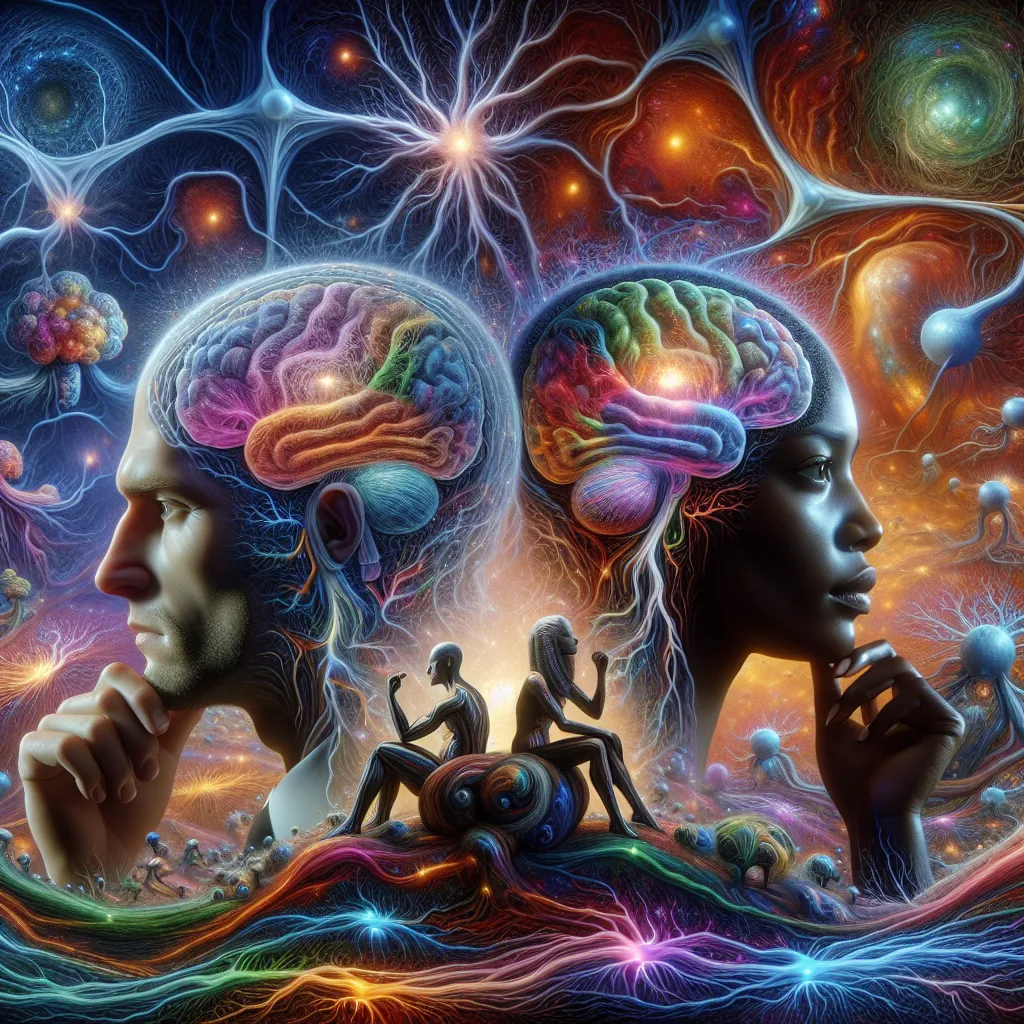
- Published on
- Authors

- Name
- You
The Neuroplasticity of Dreaming: How Dreams Rewire the Brain
Welcome, fellow explorers of the mind! Did you ever ponder if the enigmatic landscapes we traverse in our dreams are just whimsical by-products of random neural firing? Or is there a deeper, more profound purpose behind why we dream? Today, we dive headfirst into the fascinating convergence of advanced neuroscience and mystical wisdom to unravel the transformative power of dreams on the brain.
The Science of Neuroplasticity
Neuroplasticity is the brain's extraordinary ability to reorganize itself by forming new neural connections. This remarkable feature enables us to adapt, learn new skills, recover from injuries, and even heal from psychological trauma. Our neurons are in a constant dance, communicating and reconfiguring in response to our experiences, thoughts, and even dreams.
Key Components of Neuroplasticity
| Component | Description |
|---|---|
| Synaptic Plasticity | The ability of synapses (connections between neurons) to strengthen or weaken over time, in response to increases or decreases in their activity. |
| Structural Plasticity | The brain's ability to physically change its structure, often observed as the growth of new neurons or the formation of new brain regions. |
Dreaming and Brain Rewiring
During sleep, especially in the Rapid Eye Movement (REM) phase, our brain engages in a flurry of activity. But why? Dreams are believed to serve several neuroplastic functions:
1. Emotional Processing
Dreams often reflect our innermost fears, desires, and unresolved conflicts. This nightly drama allows for the emotional resetting of the brain. By integrating and processing emotional experiences, our brain can form new pathways, helping us better manage our waking emotional landscape.
2. Memory Consolidation
The alchemy of dreams also plays a crucial role in organizing and integrating new memories. Scientists posit that during REM sleep, the hippocampus (brain’s memory center) displays activity that resembles waking learning patterns, suggesting a consolidation process. Dreams, therefore, can work as a mental rehearsal, solidifying newly acquired knowledge and skills.
3. Problem Solving and Creativity
Eureka! Have you ever woken up with a solution to a problem or a burst of creative insight? This phenomenon underscores the problem-solving functions of dreams. Freed from the constraints of logical waking thought, our dreaming mind wades through a sea of infinite possibilities, forming unique connections that can spark breakthroughs.
Mystical Perspectives on Dreaming
Long before the dawn of modern neuroscience, ancient cultures revered dreams as doorways to the divine, wisdom, and self-discovery. Shamanic traditions use lucid dreaming to journey into the spiritual realms, seeking guidance and healing. This ancient practice has uncanny parallels with the neuroplastic benefits modern science attributes to dreams.
Shamanic Insights
| Shamanic Practice | Modern Neuroscientific Parallels |
|---|---|
| Lucid Dreaming | Conscious manipulation of dreams enhancing cognitive flexibility. |
The Tibetan Buddhist practice of Dream Yoga further embodies the wisdom of harnessing dreams for spiritual growth. Practitioners believe that mastering awareness in dreams can lead to heightened states of consciousness and eventual enlightenment—a wholly transformative rewiring of the mind.
Practical Tips to Maximize Neuroplastic Benefits of Dreaming
- Dream Journaling: Keep a journal by your bedside. Recording your dreams improves dream recall and can unearth patterns and insights.
- Mindfulness Meditation: Cultivate mindfulness to enhance your awareness, not only during the day but also in the dream state.
- Lucid Dreaming Techniques: Practice techniques to become lucid in your dreams, thereby actively participating in your brain’s nightly rewiring.
Conclusion
In this dance between the seen and the unseen, science and mysticism, we find that dreams are not mere flights of fancy. They are profound, transformative experiences that wield the magic of neuroplasticity to heal, grow, and evolve our brains. Whether viewed through the lens of a neuroscientist or the eyes of a shaman, the world of dreams offers an extraordinary realm where the brain’s potential stretches into infinity.
So, the next time you drift off to sleep, remember: you are embarking on a voyage through the neural constellations of your own brain. Dream well, dream deeply.
"The dream is the small hidden door in the deepest and most intimate sanctum of the soul..." - Carl Jung
